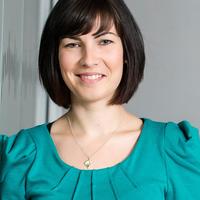
Professor Caroline Sturdy Colls
I am a Professor of Holocaust Archaeology and Genocide Investigation and the Director of the Centre of Archaeology at the University of Huddersfield. I am currently the Principal Investigator on the project "Trawniki:Nexus of the Final Solution, funded by the Claims Conference. I am also supervising a post-doctoral research project regarding mass grave investigation in Ukraine and I have a long-running project with my colleagues from the Centre of Archaeology and the Lake District Holocaust Project. Since 2007, my research has focused on the application of interdisciplinary approaches to the investigation of Holocaust landscapes and sites of genocide. My work thus spans archaeology, forensic investigation, history, criminology and digital humanities. I have undertaken fieldwork and research regarding more than 60 Holocaust sites and I have also supervised research projects relating to mass violence in Cyprus, Namibia, Zimbabwe and Ukraine during the 20th and 21st centuries. I have also worked with practitioners in fine art, theatre and the film industry to co-curate exhibitions, develop educational workshops and participate in documentary films. In 2016, I was awarded the European Archaeological Heritage Prize for my contribution to the investigation of modern conflict and in 2021, I received a Medal of Honour for my contribution to knowledge about the former camps at Treblinka. I am the author of numerous publications, including "Forensic Approaches to Buried Remains" (Wiley and Sons, 2013), "Holocaust Archaeologies: Approaches and Future Directions" (Springer, 2015), the Handbook on Missing Persons (Springer, 2016) and "Adolf Island: The Nazi Occupation of Alderney" (Manchester University Press, 2022). I am a Board Member of Forensic Architecture at Goldsmiths College. In 2016, I was the Fred and Maria Devinki Scholar at the Mandel Center at the United States Holocaust Memorial Museum.
As a practicing forensic archaeologist, I undertake consultancy with regards the search and recovery of buried remains and missing persons. I am a member of the Forensic Archaeology Special Interest Group, under the auspice of the Institute for Archaeologists and a member of the UK Forensic Archaeology Expert Panel. I am also a Member of the Chartered Institute For Archaeologists (MIFA) and a Member of the Chartered Society of Forensic Sciences (MCSFS).
I currently supervise PhD researchers undertaking projects on unidentified bodies, cold case investigation, the digitisation of difficult histories and funerary archaeology. I have previously taught across numerous postgraduate and undergraduate courses in forensic archaeology, traditional archaeology, genocide investigation, forensic science and policing.
Address: University of Huddersfield, Queensgate, Huddersfield, HD1 3DH
As a practicing forensic archaeologist, I undertake consultancy with regards the search and recovery of buried remains and missing persons. I am a member of the Forensic Archaeology Special Interest Group, under the auspice of the Institute for Archaeologists and a member of the UK Forensic Archaeology Expert Panel. I am also a Member of the Chartered Institute For Archaeologists (MIFA) and a Member of the Chartered Society of Forensic Sciences (MCSFS).
I currently supervise PhD researchers undertaking projects on unidentified bodies, cold case investigation, the digitisation of difficult histories and funerary archaeology. I have previously taught across numerous postgraduate and undergraduate courses in forensic archaeology, traditional archaeology, genocide investigation, forensic science and policing.
Address: University of Huddersfield, Queensgate, Huddersfield, HD1 3DH
less
Related Authors
Noel B. Salazar
KU Leuven
Andreas Umland
National University of "Kyiv-Mohyla Academy"
Alexandra Chavarria Arnau
Università degli Studi di Padova
Remo Caponi
University of Cologne
Lorenzo Verderame
Università degli Studi "La Sapienza" di Roma
Enrico Cirelli
Università di Bologna
Laurajane Smith
The Australian National University
Viktória Kiss
Hungarian Academy of Sciences
Jeffrey Stackert
University of Chicago
Joseph Lumbard
Hamad Bin Khalifa University
InterestsView All (15)


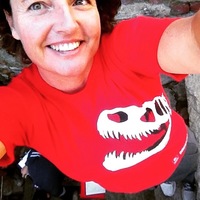

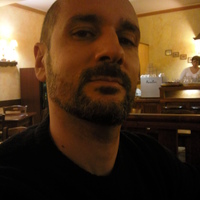

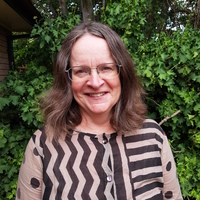
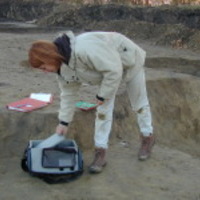

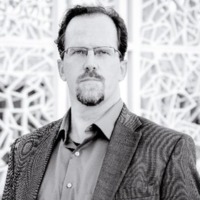
Uploads
Books by Professor Caroline Sturdy Colls
SPIS TREŚCI:
Alexandra Staniewska, Ewa Domańska, Ekshumacje polityczne jako zjawisko społeczne i wielodziedzinowe pole badań (s. 13)
CZĘŚĆ I – TEORIE, METODY, PODEJŚCIA BADAWCZE
– Élisabeth Anstett, Co to jest grób masowy? Ku antropologii postępowania ze szczątkami ludzkimi we współczesnych kontekstach zbrodni masowych (s. 65)
– Erin Jessee, Mark Skinner, Typologia grobów masowych i związanych z nimi miejsc (s. 82)
– Christopher J. Knüsel, John Robb, Tafonomia funeralna: przegląd celów i metod (s. 93)
– Leszek Majgier, Oimahmad Rahmonov, Nekrosole wybranych cmentarzy Krainy Wielkich Jezior Mazurskich (s. 157)
– Józef Żychowski, Przegląd wyników badań prowadzonych na świecie nad wpływem cmentarzy na chemizm wód podziemnych (s. 173)
– Zbigniew Kobyliński, Źródła archeologiczne czy święte kości przodków: kulturowe uwarunkowania traktowania szczątków ludzkich z wykopalisk (s. 198)
– Alfredo González‐Ruibal, Etyka archeologii (s. 225)
CZĘŚĆ II – PERSPEKTYWA GLOBALNA:
– Clyde Collins Snow, Przedmowa do książki Archeologia sądowa: perspektywa globalna (s. 253)
– Francisco Ferrándiz, Życia po życiu: społeczna autopsja ekshumacji grobów masowych w Hiszpanii (s. 266)
– Sarah Wagner, Problemy z niekompletnymi i przemieszanymi szczątkami:
porównanie zaginionych ze Srebrenicy i ofiar wojny koreańskiej (s. 292)
– Élisabeth Anstett, Szczątki ludzkie z Gułagu. Ujęcie antropologiczne (s. 316)
– Małgorzata Wosińska, Upamiętnianie ludzkich szczątków jako strategia emancypacyjna. Ludobójstwo w Rwandzie a Holokaust (s. 333)
– Dorothée Delacroix, Etnografia uciszanej przemocy. Ku antropologii życia pośmiertnego zamordowanych i zaginionych w Peru (s. 365)
– Anne Yvonne Guillou, Od kości-dowodów do duchów opiekuńczych. Status ciał po ludobójstwie Czerwonych Khmerów (s. 385)
CZĘŚĆ III – PERSPEKTYWA LOKALNA:
– Caroline Sturdy Colls, Archeologie Zagłady i badanie miejsc nazistowskich prześladowań (s. 403)
– Andrzej Kola, Zbrodnia katyńska w świetle prac archeologiczno- -ekshumacyjnych tajnych cmentarzysk NKWD w Charkowie (Piatichatki) i Kijowie (Bykownia) (s. 459)
– Krzysztof Persak, Ekshumacja, której (prawie) nie było. Prace archeologiczno-ekshumacyjne w Jedwabnem w 2001 roku i ich wyniki (s. 486)
– Milena Bykowska, Zdjęcia lotnicze i materiał DNA w procesie identyfikacji skazanych na karę śmierci i rozstrzelanych w Polsce w latach 1944–1956. Zarys problematyki (s. 516)
– Informacja o postępowaniu w sprawie katastrofy smoleńskiej (s. 531)
– Marcin Napiórkowski, Uroczystości żałobne jako narzędzie legitymizacji i delegitymizacji władzy (s. 535)
– Paweł Tomczok, Nekropatriotyzm Przemysława Dakowicza (s. 559)
– Przemysław Dakowicz, Rodowód, Brama Salariańska (s. 568)
– Grzegorz Kwiatkowski, mogił, zbierać (s. 569)
– Ewa Domańska, Nekrodziedzictwo (s. 572)
Among the Handbook’s topics:
·A profile of missing persons: some key findings for police officers.
·Missing persons investigations and identification: issues of scale, infrastructure, and political will.
·Pregnancy and parenting among runaway and homeless young women.
·Estimating the appearance of the missing: forensic age progression in the search for missing persons.
·The use of trace evidence in missing persons investigations.
·The Investigation of historic missing persons cases: genocide and “conflict time” human rights abuses.
The depth and scope of its expertise make the Handbook of Missing Persons useful for criminal justice and forensic professionals, health care and mental health professionals, social scientists, legal professionals, policy leaders, community leaders, and military personnel, as well as for the general public.
approaches to be used to locate and search these sites in order to identify evidence of Nazi crimes. It shows how a combination of forensic and archaeological methods has been successfully applied at a number of Holocaust sites across Europe in order to locate mass graves and other evidence of atrocity. The variety of state-of-the-art techniques and innovative methods now available are presented and suggestions for future work are made. In particular, proposals for a central database of Holocaust
mass grave sites are presented. Ethical working practices are also discussed, given the need to carry out detailed scientific enquiry whilst respecting the sensitive nature of the evidence being sought.
Papers by Professor Caroline Sturdy Colls
SPIS TREŚCI:
Alexandra Staniewska, Ewa Domańska, Ekshumacje polityczne jako zjawisko społeczne i wielodziedzinowe pole badań (s. 13)
CZĘŚĆ I – TEORIE, METODY, PODEJŚCIA BADAWCZE
– Élisabeth Anstett, Co to jest grób masowy? Ku antropologii postępowania ze szczątkami ludzkimi we współczesnych kontekstach zbrodni masowych (s. 65)
– Erin Jessee, Mark Skinner, Typologia grobów masowych i związanych z nimi miejsc (s. 82)
– Christopher J. Knüsel, John Robb, Tafonomia funeralna: przegląd celów i metod (s. 93)
– Leszek Majgier, Oimahmad Rahmonov, Nekrosole wybranych cmentarzy Krainy Wielkich Jezior Mazurskich (s. 157)
– Józef Żychowski, Przegląd wyników badań prowadzonych na świecie nad wpływem cmentarzy na chemizm wód podziemnych (s. 173)
– Zbigniew Kobyliński, Źródła archeologiczne czy święte kości przodków: kulturowe uwarunkowania traktowania szczątków ludzkich z wykopalisk (s. 198)
– Alfredo González‐Ruibal, Etyka archeologii (s. 225)
CZĘŚĆ II – PERSPEKTYWA GLOBALNA:
– Clyde Collins Snow, Przedmowa do książki Archeologia sądowa: perspektywa globalna (s. 253)
– Francisco Ferrándiz, Życia po życiu: społeczna autopsja ekshumacji grobów masowych w Hiszpanii (s. 266)
– Sarah Wagner, Problemy z niekompletnymi i przemieszanymi szczątkami:
porównanie zaginionych ze Srebrenicy i ofiar wojny koreańskiej (s. 292)
– Élisabeth Anstett, Szczątki ludzkie z Gułagu. Ujęcie antropologiczne (s. 316)
– Małgorzata Wosińska, Upamiętnianie ludzkich szczątków jako strategia emancypacyjna. Ludobójstwo w Rwandzie a Holokaust (s. 333)
– Dorothée Delacroix, Etnografia uciszanej przemocy. Ku antropologii życia pośmiertnego zamordowanych i zaginionych w Peru (s. 365)
– Anne Yvonne Guillou, Od kości-dowodów do duchów opiekuńczych. Status ciał po ludobójstwie Czerwonych Khmerów (s. 385)
CZĘŚĆ III – PERSPEKTYWA LOKALNA:
– Caroline Sturdy Colls, Archeologie Zagłady i badanie miejsc nazistowskich prześladowań (s. 403)
– Andrzej Kola, Zbrodnia katyńska w świetle prac archeologiczno- -ekshumacyjnych tajnych cmentarzysk NKWD w Charkowie (Piatichatki) i Kijowie (Bykownia) (s. 459)
– Krzysztof Persak, Ekshumacja, której (prawie) nie było. Prace archeologiczno-ekshumacyjne w Jedwabnem w 2001 roku i ich wyniki (s. 486)
– Milena Bykowska, Zdjęcia lotnicze i materiał DNA w procesie identyfikacji skazanych na karę śmierci i rozstrzelanych w Polsce w latach 1944–1956. Zarys problematyki (s. 516)
– Informacja o postępowaniu w sprawie katastrofy smoleńskiej (s. 531)
– Marcin Napiórkowski, Uroczystości żałobne jako narzędzie legitymizacji i delegitymizacji władzy (s. 535)
– Paweł Tomczok, Nekropatriotyzm Przemysława Dakowicza (s. 559)
– Przemysław Dakowicz, Rodowód, Brama Salariańska (s. 568)
– Grzegorz Kwiatkowski, mogił, zbierać (s. 569)
– Ewa Domańska, Nekrodziedzictwo (s. 572)
Among the Handbook’s topics:
·A profile of missing persons: some key findings for police officers.
·Missing persons investigations and identification: issues of scale, infrastructure, and political will.
·Pregnancy and parenting among runaway and homeless young women.
·Estimating the appearance of the missing: forensic age progression in the search for missing persons.
·The use of trace evidence in missing persons investigations.
·The Investigation of historic missing persons cases: genocide and “conflict time” human rights abuses.
The depth and scope of its expertise make the Handbook of Missing Persons useful for criminal justice and forensic professionals, health care and mental health professionals, social scientists, legal professionals, policy leaders, community leaders, and military personnel, as well as for the general public.
approaches to be used to locate and search these sites in order to identify evidence of Nazi crimes. It shows how a combination of forensic and archaeological methods has been successfully applied at a number of Holocaust sites across Europe in order to locate mass graves and other evidence of atrocity. The variety of state-of-the-art techniques and innovative methods now available are presented and suggestions for future work are made. In particular, proposals for a central database of Holocaust
mass grave sites are presented. Ethical working practices are also discussed, given the need to carry out detailed scientific enquiry whilst respecting the sensitive nature of the evidence being sought.
based on our own experience in the field.